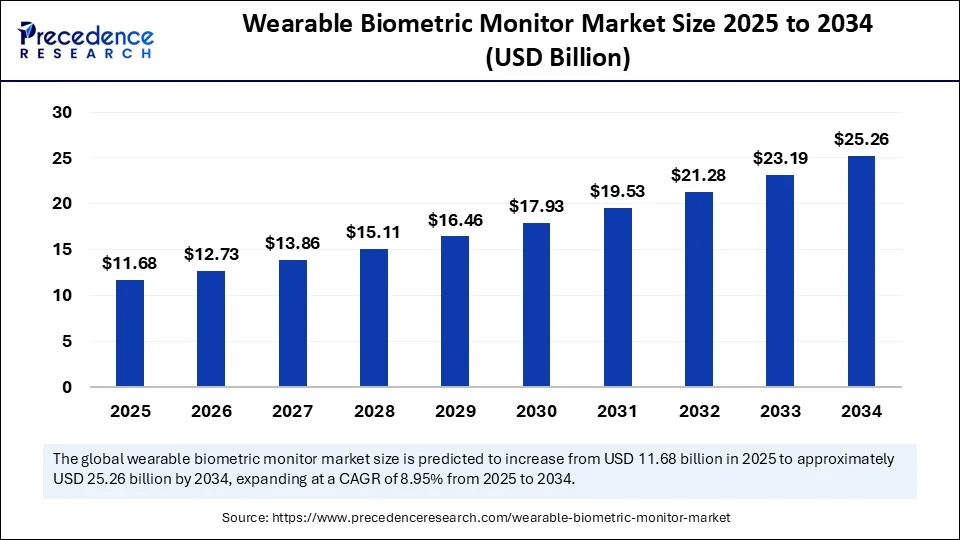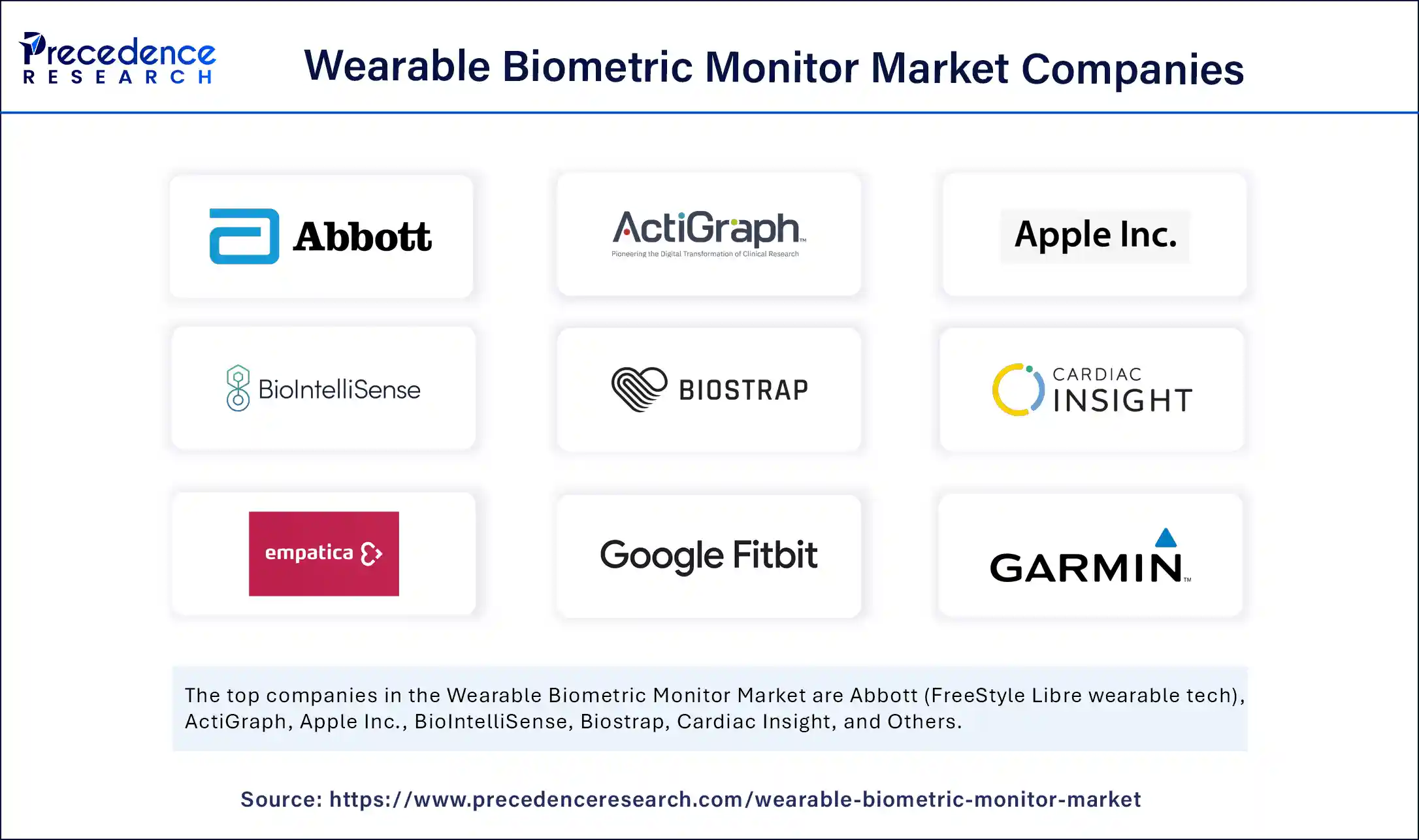
Market Overview
The Wearable Biometric Monitor Market has been experiencing rapid growth fueled by increasing consumer awareness of health and fitness, advancements in wearable technology, and the rising prevalence of chronic diseases. Wearable biometric monitors are devices equipped with sensors that continuously track vital signs such as heart rate, blood oxygen levels, respiratory rate, body temperature, and sleep patterns. These devices are widely used across healthcare, sports, and personal wellness sectors. The market includes smartwatches, fitness bands, patches, and other form factors designed to provide real-time biometric data to users. With the increasing need for personalized healthcare and remote patient monitoring, the wearable biometric monitor market is positioned to transform the way health data is collected and analyzed.
AI and Innovation
Artificial intelligence (AI) is playing a pivotal role in shaping the Wearable Biometric Monitor Market by enabling smarter, more predictive, and personalized monitoring solutions. AI algorithms process vast amounts of biometric data collected by wearable devices to provide insights into user health patterns, detect anomalies, and even predict potential health issues before symptoms appear. Innovations in sensor technology have led to the development of highly accurate and non-invasive biometric sensors that can be seamlessly integrated into wearable devices. Miniaturization and flexible electronics allow wearables to be lightweight, comfortable, and discreet, enhancing user adoption. Additionally, innovations such as edge computing enable data processing on the device itself, reducing latency and improving privacy. Connectivity technologies like 5G and Bluetooth Low Energy facilitate real-time data transfer, enabling continuous health monitoring outside traditional clinical settings.
Future Trends of the Market
Several future trends are expected to drive the evolution of the Wearable Biometric Monitor Market. One prominent trend is the integration of wearable biometric monitors with telemedicine platforms, allowing healthcare professionals to remotely monitor patients in real time, enhancing chronic disease management. The use of advanced biosensors capable of measuring new physiological parameters such as hydration levels, blood glucose, and stress markers is anticipated to expand. Materials science innovations are leading to the creation of flexible, skin-like sensors that improve comfort and accuracy. Personalized health coaching powered by AI, which analyzes biometric data to deliver customized wellness plans, is gaining traction. Additionally, increased focus on mental health monitoring through biometric markers like heart rate variability and electrodermal activity is emerging. The integration of biometric wearables with smart home and IoT ecosystems will further enhance health management capabilities.
Rising Demands of the Market
The demand in the Wearable Biometric Monitor Market is escalating significantly due to multiple driving factors. The increasing global burden of lifestyle diseases such as cardiovascular ailments, diabetes, and respiratory conditions is pushing consumers and healthcare providers to adopt wearable biometric monitors for early detection and continuous management. Growing health consciousness among consumers, driven by an emphasis on preventive care, fuels interest in devices that offer real-time health feedback. The aging population worldwide requires continuous health monitoring to manage chronic conditions, further boosting demand. Fitness enthusiasts and athletes also contribute to rising demand by using biometric monitors to optimize training and recovery. Additionally, the COVID-19 pandemic has accelerated acceptance of remote monitoring solutions, highlighting the importance of wearable biometric devices for reducing hospital visits and enabling telehealth.
Key Market Highlights
The Wearable Biometric Monitor Market is characterized by significant product innovation, strategic collaborations, and diverse segmentation. Market leaders continue to launch devices equipped with multi-sensor arrays, combining heart rate monitoring with SpO2 tracking, ECG, and sleep analysis features. Product segmentation covers various types such as smartwatches, fitness bands, chest straps, patches, and rings. Application segments include healthcare monitoring, fitness tracking, remote patient monitoring, and workplace wellness. Distribution channels span online platforms, specialty stores, pharmacies, and consumer electronics outlets, with e-commerce gaining increased prominence. The competitive landscape includes major technology firms, healthcare companies, and emerging startups focused on specialized biometric monitoring solutions. Additionally, partnerships between tech companies and healthcare providers are creating integrated ecosystems that enhance data accuracy and user engagement.
Market Growth Drivers
Several critical factors are driving the rapid growth of the Wearable Biometric Monitor Market. Technological advancements in sensor accuracy, battery life, and wireless connectivity are enabling the development of sophisticated yet user-friendly devices. Increasing healthcare expenditures globally allow for greater investment in innovative monitoring technologies. Government initiatives promoting digital health and telemedicine create an encouraging regulatory environment. Rising adoption of fitness and wellness programs across corporate sectors encourages the use of biometric monitors to track employee health. Growing consumer preference for personalized and real-time health data over traditional episodic check-ups further drives demand. The surge in smartphone penetration and integration of wearable data with mobile health apps also facilitate market expansion by providing seamless user experiences.
Restraints
Despite its promising potential, the Wearable Biometric Monitor Market faces several challenges. Privacy and data security concerns are significant barriers, as biometric devices collect sensitive personal health information that requires stringent protection. Accuracy and reliability issues of biometric sensors, particularly in non-clinical settings, sometimes reduce consumer confidence. High manufacturing and development costs contribute to elevated device prices, limiting affordability in certain regions. Regulatory complexities and varied approval processes across countries hinder swift market penetration. Additionally, battery life limitations and user discomfort with wearable form factors pose adoption challenges. Competition from traditional monitoring methods and skepticism among healthcare providers about the clinical validity of wearable data also restrict market growth.
Opportunities
The Wearable Biometric Monitor Market offers substantial opportunities for innovation and expansion. Emerging economies present untapped markets where increasing healthcare awareness and improving infrastructure can lead to high adoption rates. Development of multifunctional devices capable of monitoring multiple vital signs simultaneously appeals to diverse consumer needs. Collaborations between wearable technology firms and healthcare providers offer avenues for integration into formal health management programs, increasing clinical acceptance. Expansion into corporate wellness and insurance sectors, where biometric data can inform health incentives and risk assessments, represents a growing opportunity. Advances in flexible electronics and battery technology can result in more comfortable, longer-lasting devices, enhancing user experience. Digital marketing and direct-to-consumer sales channels also provide opportunities for companies to reach a broader audience efficiently.
Regional Insights
Regional variations significantly influence the Wearable Biometric Monitor Market landscape. North America dominates the market due to high healthcare spending, advanced technological infrastructure, and strong consumer acceptance of wearable technology. Europe closely follows, supported by an aging population and well-established healthcare systems. The Asia-Pacific region is witnessing rapid growth driven by increasing urbanization, rising disposable incomes, and expanding smartphone penetration. Countries like China, Japan, and South Korea are investing heavily in healthcare innovation, propelling market expansion. Latin America and the Middle East & Africa regions, though currently smaller in market share, are expected to experience growth due to improving healthcare infrastructure and rising consumer health awareness. Regulatory support and digital health initiatives in these regions further enhance growth prospects.
Also Read@ https://www.pharma-geek.com/dehydration-monitoring-devices-market/
Wearable Biometric Monitor Market Companies

- Abbott (FreeStyle Libre wearable tech)
- ActiGraph
- Apple Inc.
- BioIntelliSense
- Biostrap
- Cardiac Insight
- Empatica
- Fitbit (Google)
- Garmin Ltd.
- Huawei Technologies
- Oura Health (Oura Ring)
- Philips Healthcare
- Polar Electro
- Samsung Electronics
- Valencell
- VitalConnect
- Whoop Inc.
- Withings
- Xiaomi Corporation
- Zephyr Technology (Medtronic)
- Wearable Biometric Monitor Market Size to Reach USD 25.26 Billion by 2034 - September 10, 2025
- Digestive Diamine Oxidase Enzyme for Supplements Market Size to Reach USD 43.87 Mn by 2034 - September 10, 2025
- Healthcare Payer Network Management Market Size to Reach USD 17.98 Billion by 2034 - September 9, 2025
